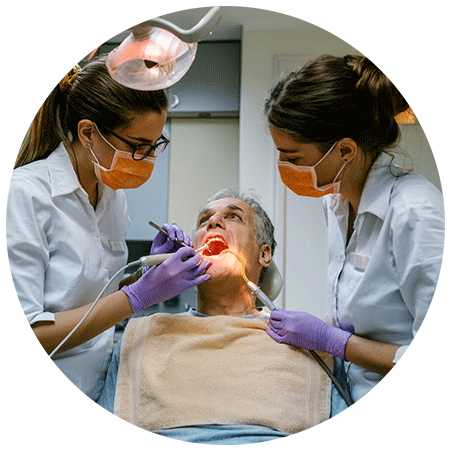Root Canal
A root canal is a dental procedure involving the removal of the soft center of the tooth, the pulp. The pulp is made up of nerves, connective tissue, and blood vessels that help the tooth grow. In the majority of cases, a general dentist or endodontist will perform a root canal while you’re under local anesthesia.
Let's Know About
Root Canal Treatment
In a root canal procedure, a dentist removes the diseased pulp from the inside of a decayed/damaged tooth to prevent infection from spreading. A dental drill or a handpiece is then used to gain access to the inside cavity of the tooth. After removing the soft pulp tissue, the dentist uses files to thoroughly clean the root canal. Depending on the level of damage to the tooth, the dentist may apply fillings to mechanically support the tooth structure and protect it from further damage or injury.
We provide natural looking procedures and fillings to take away your pain or tooth damage while making it look like you never even had work done. Even after the procedure is over, we’ll be glad to do any maintenance work your smile needs.


Execution Of
Root Canal Treatment
The dentist first administers local anaesthesia to your treatment area to lower RCT pain as well as make the spot numb. Then a tiny hole is created on the surface of the tooth to remove the affected nerves and dead pulp. Next, the root canal dentists at Sabka Dentist clean and reshape the particular decontaminated hollow area.
This hollow empty canal will be lastly filled up with a dental filling to seal off the tooth root canal completely, thus completing the RCT. Immediately after this, the tooth is absolutely dead and has no sensation.
Finally, in order to safeguard this lifeless brittle tooth, a crown might be placed on the dead tooth in order to ensure that the patient can make use of the tooth just like before. The RCT price widely varies individually for each person depending on the seriousness of the condition.
Signs & Symptoms
- An abscess (or pimple) on the gums.
- Sensitivity to hot and cold.
- Severe toothache pain.
- Sometimes no symptoms are present.
- Swelling and/or tenderness.
Major Reasons
- Decay has reached the tooth pulp (the living tissue inside the tooth).
- Infection or abscess have developed inside the tooth or at the root tip.
- Injury or trauma to the tooth.

Make Appointment
Feel free to let us know how we can assist you or what specific information you require.


